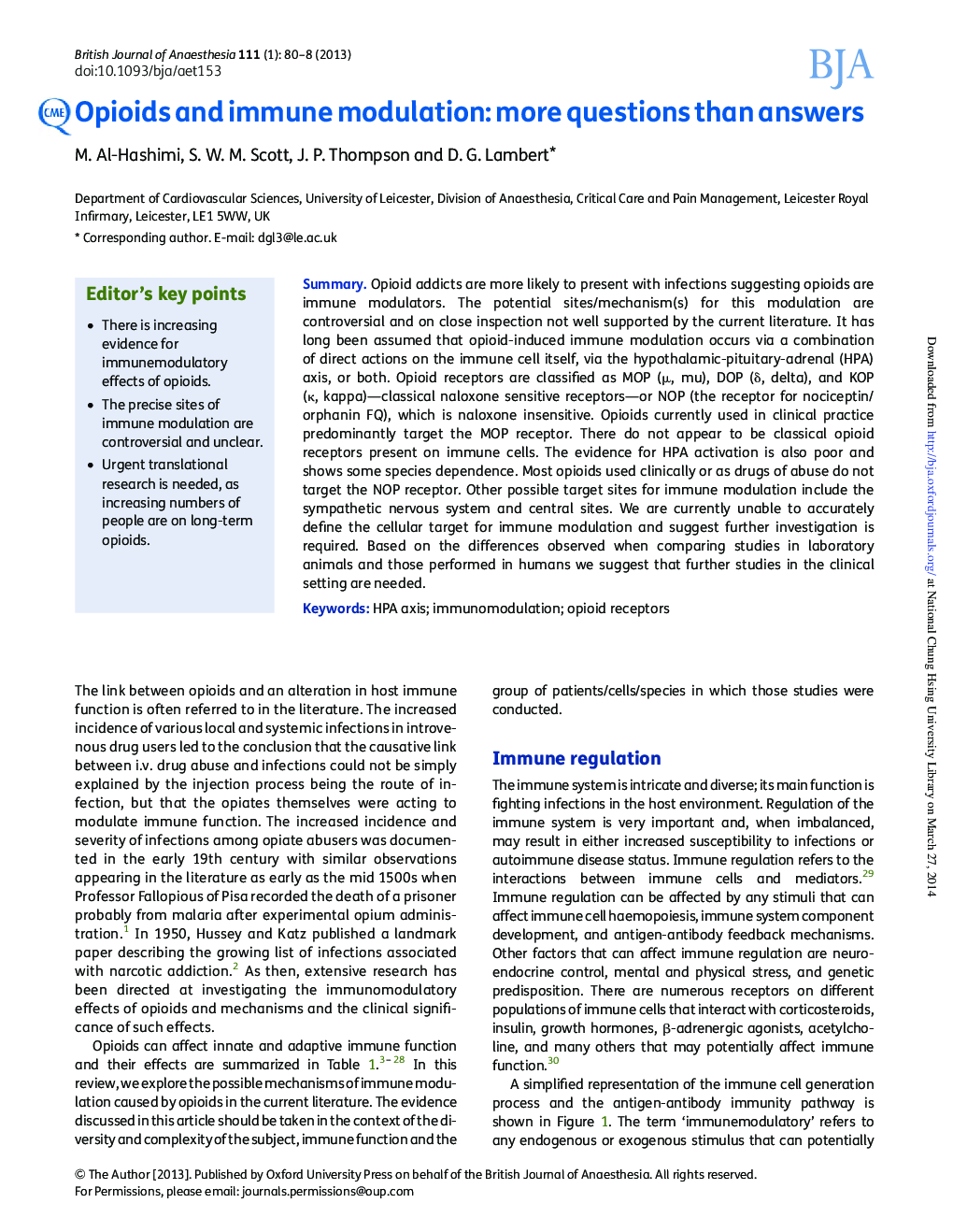| Article ID | Journal | Published Year | Pages | File Type |
|---|---|---|---|---|
| 8933708 | British Journal of Anaesthesia | 2013 | 9 Pages |
Abstract
Opioid addicts are more likely to present with infections suggesting opioids are immune modulators. The potential sites/mechanism(s) for this modulation are controversial and on close inspection not well supported by the current literature. It has long been assumed that opioid-induced immune modulation occurs via a combination of direct actions on the immune cell itself, via the hypothalamic-pituitary-adrenal (HPA) axis, or both. Opioid receptors are classified as MOP (μ, mu), DOP (δ, delta), and KOP (κ, kappa)'classical naloxone sensitive receptors'or NOP (the receptor for nociceptin/orphanin FQ), which is naloxone insensitive. Opioids currently used in clinical practice predominantly target the MOP receptor. There do not appear to be classical opioid receptors present on immune cells. The evidence for HPA activation is also poor and shows some species dependence. Most opioids used clinically or as drugs of abuse do not target the NOP receptor. Other possible target sites for immune modulation include the sympathetic nervous system and central sites. We are currently unable to accurately define the cellular target for immune modulation and suggest further investigation is required. Based on the differences observed when comparing studies in laboratory animals and those performed in humans we suggest that further studies in the clinical setting are needed.
Related Topics
Health Sciences
Medicine and Dentistry
Anesthesiology and Pain Medicine
Authors
M Al-Hashimi, S.W.M. Scott, J.P. Thompson, D.G. Lambert,
